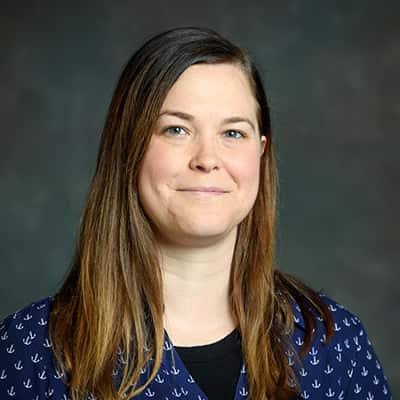Erin V. Iski
Charles University Prague, Czechia
Department of Surface and Plasma Science
Tuesday, 22nd March 2022,16:00 s.t.
The talk will be given in a hybrid mode.
You can either join via Zoom:
https://tuwien.zoom.us/j/95229010795?pwd=MThVQ0Y1NjN2bDFVdGxLZEhHR21rUT09
Meeting ID: 952 2901 0795 Passcode: MtvBD2Y5
Or you attend in physical presence:
TU Wien, Institute of Applied Physics,
Wiedner Hauptstraße 8-10, 1040 Vienna
Yellow Tower “B”, Seminar Room DB 05 B (5th floor)
Visualizing Nanoscale Surface Chemistry: From Ultra-High Vacuum to Electrochemical Environments
Bio of Erin V. Iski
Combining aspects from both her graduate work at Tufts and her postdoctoral work at Argonne, Erin Iski‘s research program at TU is centered on the use of ambient, liquid, and electrochemical Scanning Tunneling Microscopy (EC-STM) to study atomically-thin, thermally stable Ag films on Au(111) and the self-assembly of amino acids on metal surfaces. The first project is focused on understanding thin film formation and stability. This second project pertains to the origin of homochirality in biology, the preference for specific secondary structures of proteins, and the characterization of non-covalent supramolecular interactions. The use of ambient and EC-STM utilizes both the incredible molecular and atomic resolution of STM and the ability to apply the findings to real-world applications, since the data is obtained at ambient pressures and temperatures. The Iski lab has developed strong interdisciplinary collaborations in a variety of fields such as nanoscience, engineering, and biochemistry, and the TU Nanotechnology Institute. Students in her research group are trained in highly valuable scientific techniques, exposed to groundbreaking science, and obtain results publishable in notable scientific journals. Other notable collaborations include work with the Jet Propulsion Lab and examining a novel method for analyzing nano-scale surface redox chemistry of prebiotic mineral catalysts and the Erosion/Corrosion Research Center at TU, which is interested in understanding the fundamental principles behind the corrosion of steel.

